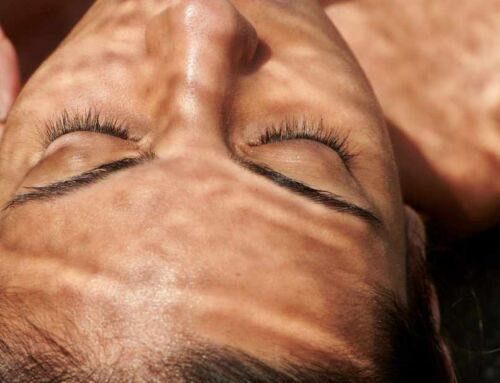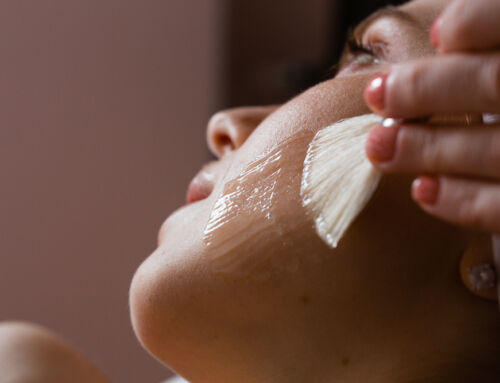Eyelid surgery, or blepharoplasty, is often shrouded in myths and misunderstandings. It’s a journey that many people consider for various reasons, from cosmetic enhancements to functional improvements.
Frequently, making an informed decision needs clarification of misconceptions. In this comprehensive guide, we’ll unravel these myths, shedding light on the realities of blepharoplasty. Whether you’re considering this procedure for aesthetic or medical reasons, understanding the truth is crucial in making a decision that aligns with your expectations and goals.
Common Myths
Blepharoplasty is Only for Cosmetic Reasons
Blepharoplasty is often labeled as a procedure solely for enhancing one’s appearance. While it undoubtedly plays a significant role in cosmetic improvement, its benefits go beyond aesthetics.
This procedure can also offer functional benefits, such as reducing eye strain and improving vision obscured by drooping eyelids. The psychological impact of an enhanced appearance boosts confidence and well-being and is an aspect that deserves recognition.
Visible Scarring
A common concern is the potential for visible scars following surgery. However, advancements in surgical techniques significantly minimize this risk. The incisions are typically made along the natural lines of your eyelids, making any scarring less noticeable. Patient testimonials and case studies often highlight the subtlety of these scars, showcasing how modern blepharoplasty techniques prioritize aesthetic outcomes.
Results are Permanent
While the outcomes of eyelid surgery may last several years, they are still subject to natural aging processes. Long-term care and a healthy lifestyle can extend the longevity of the results. However, it’s essential to have realistic expectations about the procedure’s permanence.
Eyelid Surgery Addresses Upper Eyelid Hooding and Crow’s Feet
It’s a common belief that blepharoplasty can correct both upper eyelid hooding and crow’s feet. Eyelid surgery effectively addresses sagging or hooding of the upper eyelids. However, it doesn’t directly treat crow’s feet, which are fine lines around the outer corners of the eyes. Other treatments like Botox or fillers are more appropriate for crow’s feet. Patients should understand the specific issues that blepharoplasty addresses to realistic expectations about the procedure.
Eyelid Surgery Removes Dark Circles
Another misconception is that blepharoplasty can eliminate dark circles under the eyes. While eyelid surgery can remove excess skin and fat and, in some cases, slightly improve the appearance of dark circles, it’s not a definitive solution for them. Treatments specifically targeting pigmentation or vascular issues are more effective for dark circles. If you have any questions, consult your surgeon to determine the most suitable approach.
One Size Fits All
Eyelid surgery is not a one-size-fits-all procedure. Surgeons tailor the procedure to each individual’s unique eye anatomy, facial structure, and personal aesthetic goals. Customizing this approach ensures that the results align with the patient’s expectations and enhance the overall facial harmony.
Results are Instant
The belief that results from eyelid surgery are instant is yet another myth. In reality, the recovery process plays a crucial role in the outcome. Factors like age, overall health, and adherence to postoperative care can influence the recovery timeline. Be patient and wait until fully healed to see the full results of the surgery.
Only Older People Get Blepharoplasty
Contrary to the belief that blepharoplasty is exclusively for older individuals, people of various ages seek this procedure for different reasons. Younger individuals may opt for eyelid surgery to address hereditary concerns, improve their quality of life, or for preventive reasons. The decision to undergo blepharoplasty is personal and varies based on individual needs and goals.
It’s a Risky Procedure
Any surgical procedure has inherent risks. When qualified and experienced surgeons perform a blepharoplasty, they are considered safe. Understanding the safety measures and success rates can help dispel fears related to the perceived risks of the surgery.
Eyelid Surgery Has a Long Recovery
Patients often overestimate the recovery duration after eyelid surgery. While the recovery process varies from person to person, many patients find it manageable with proper postoperative care. Patient testimonials often highlight how their recovery was smoother and quicker than anticipated.
Blepharoplasty Only Treats the Upper Lids
A common misconception is that blepharoplasty is limited to the upper eyelids. Depending on the patient’s needs, the surgeon can enhance both the upper and lower eyelids. Discuss this with your surgeon for a comprehensive approach to rejuvenating the eye area.
Eyelid Surgery Causes Chronic Dry Eyes
There’s a myth that eyelid surgery leads to chronic dry eyes. Some patients may experience temporary dryness post-surgery, although chronic dry eyes are not an expected outcome. Surgeons are cautious to minimize this risk, and any postoperative dryness usually resolves as the healing progresses.
Blepharoplasty Surgery Is Expensive
The cost of blepharoplasty may seem prohibitively high. However, the cost can vary based on the extent of the procedure, the surgeon’s experience, and the geographic location. It’s essential to consider the long-term improvements to the patient’s quality of life and potential financing options available.
Tips for a Successful Blepharoplasty
Researching Qualified Surgeons
The first step towards a successful blepharoplasty is choosing the right surgeon. Board certification is a testament to their skill, knowledge, and expertise, providing peace of mind.
Additionally, consider reading online reviews and patient testimonials to gauge each surgeon’s reputation. The right surgeon brings their expertise and understands your needs and aesthetic goals.
Understanding Preoperative and Postoperative Care
A successful eyelid surgery extends beyond the procedure itself. It’s essential to understand both preoperative and postoperative care. Follow your surgeon’s instructions on preparing for surgery and managing common post-surgical effects like bruising and swelling. A clear understanding of these steps helps ensure a smooth recovery and optimal results.
Managing Expectations
Managing expectations is critical on your journey with eyelid surgery. Discuss with your surgeon what the surgery can and cannot achieve. Real-life examples and case studies can provide a clearer picture of potential outcomes. Remember, you want to improve your quality of life or enhance your appearance while maintaining a natural look.
Prepare for Your Recovery Time
Recovery time is a valid concern for blepharoplasty patients. Prepare your home for post-surgery recovery and ensure you have everything needed for a comfortable and stress-free healing process. Arrange for help if needed, prepare ice packs for swelling, and set up a comfortable resting area.
Diligently Follow Your Self-Care Instructions
For a successful recovery, following postoperative care instructions is essential. Patients should follow proper wound care, take prescribed medications, and attend follow-up appointments. Diligently following these instructions helps minimize the risk of complications and ensures the best possible healing.
Keep Your Eyes on the Prize
Maintaining a positive outlook is vital during the recovery process. Keep your end goal in mind, stay motivated, and be patient. Success stories from those who have undergone similar procedures can be inspiring. Remember, the journey to achieving your aesthetic goals requires time and patience.
Sun Protection is Essential
Protecting your eyes from sun exposure post-surgery is vital. Wear sunglasses with adequate UV protection and apply sunscreen around the eye area to prevent complications and ensure the longevity of your results. Remember to use sun protection during postoperative care, as it’s crucial for a successful recovery.
Allow Eyes to Rest
Giving your eyes ample rest post-surgery is critical to promoting healing. Avoid activities that strain the eyes, like prolonged screen time, reading, or watching TV. This rest period is not just about physical rest but also about allowing the surgical area to heal undisturbed for better overall results.
Get Plenty of Rest
Overall, rest and good sleep are essential for healing. Ensure you have a comfortable sleeping environment, and consider adjusting your sleep position if recommended by your surgeon. Quality rest can significantly impact the speed and quality of your recovery.
Skip Strenuous Activities
Be sure to avoid any strenuous activities after undergoing blepharoplasty. Engaging in high-impact activities too soon can negatively affect the surgical site and prolong recovery. Discuss with your surgeon the appropriate time to resume various physical activities.
Stop Smoking
Quitting smoking before and after your blepharoplasty is crucial to the procedure’s success. Smoking affects healing and raises the risk of complications. If you smoke, consider seeking resources or support to quit, as this can significantly improve your surgical outcomes and overall well-being.
Keep the Area Clean
Maintaining cleanliness around the surgical site prevents infection and promotes healthy healing. Follow your surgeon’s guidelines for gentle cleaning and hygiene practices. Cleaning the area is a simple yet critical step for a smooth recovery.
Sleep in a Correct Position
Sleeping in the proper position post-surgery can reduce swelling and aid healing. Your surgeon may recommend specific positions, such as elevating your head, to ensure the best recovery outcomes. Adhering to these recommendations can have a significant impact on your recovery.
Use Cold Compresses and Ice Packs
Cold compresses and ice packs can be effective in reducing swelling and discomfort. Follow your surgeon’s advice on the frequency and duration of these applications. Cold therapy is essential in postoperative care and aids a more comfortable recovery.
Avoid Touching, Rubbing, and Scratching Your Eyes
Remember to avoid any contact with your eyes during the recovery period. Touching, rubbing, or scratching the operated area can lead to complications and adversely affect the results. Be sure to wash your hands before caring for the area to reduce the risk of infection. Following guidelines provided by your surgeon ensures a safe and successful healing process.
As we conclude this comprehensive guide on blepharoplasty, it’s important to remember that the key to successful eyelid surgery is being well-informed and prepared. Debunking myths and understanding the realities of eyelid surgery can significantly impact your decision-making process and satisfaction with the results.
Remember, choosing the right surgeon and following their guidance before and after the procedure is crucial for your safety and the success of your surgery.
If you’re considering blepharoplasty or have any questions about this procedure, we encourage you to contact our expert team at Garza Plastic Surgery. Our commitment to patient education and care ensures that you receive personalized advice and support throughout your journey.
Contact us today to schedule a consultation. Kickstart your journey and reach your aesthetic goals with confidence and peace of mind.





